INTERNACIONAL
Texas AG Ken Paxton sued over new rule to rein in ‘rogue’ DAs by allowing him access to their case records

Five Texas district attorneys are suing state Attorney General Ken Paxton, challenging new rules that would give his office broad authority to access their office’s case records, according to a new report.
In the two lawsuits filed on Friday, the district attorneys said the rule, in effect since April, is an unconstitutional overreach that violates the separation of powers and would impose unnecessary burdens on county prosecutors, The Texas Tribune reported.
District attorneys in Dallas, Bexar and Harris counties filed one lawsuit while district attorneys in Travis and El Paso counties filed another. Both lawsuits seek to block Paxton from enforcing the rule, arguing that it violates the state constitution and federal law.
The rule created by Paxton’s office applies to counties with at least 400,000 residents, impacting only 13 of Texas’ 254 counties, The Texas Tribune reported. It requires district attorneys to provide all documents or communications produced or received by their offices, including confidential information.
TEXAS GOV. ABBOTT SIGNS $1 BILLION VOUCHER PROGRAM INTO LAW, CAPPING OFF WIN FOR SCHOOL CHOICE ADVOCATES
Five Texas district attorneys are suing state Attorney General Ken Paxton over a new rule that would require them to give Paxton meticulous access to their office’s case records. ((AP Photo/Eric Gay, File)
All documents, correspondence and handwritten notes relevant to a case can be subject to review, according to the outlet. Counties must also submit quarterly reports to the attorney general on twelve different subjects, including specific information on indictments of police officers and the number of times indictments were issued for election code violations. Information on internal policies and how funds obtained through civil forfeiture are spent would also need to be turned over under the new rule.
Dallas County District Attorney John Creuzot described the rules as a violation of the separation of powers between the executive branch and the judicial branch.
«To make matters worse, the rule’s extremely burdensome reporting requirements will cause district attorneys’ offices to divert resources and staff away from core prosecutorial roles and responsibilities, which harms public safety and the administration of justice,» Creuzot said in a statement. «And it will cost Dallas County taxpayers hundreds of thousands of dollars or more to pay for the technology and resources needed to identify and produce all the responsive information under these unnecessary reporting requirements.»
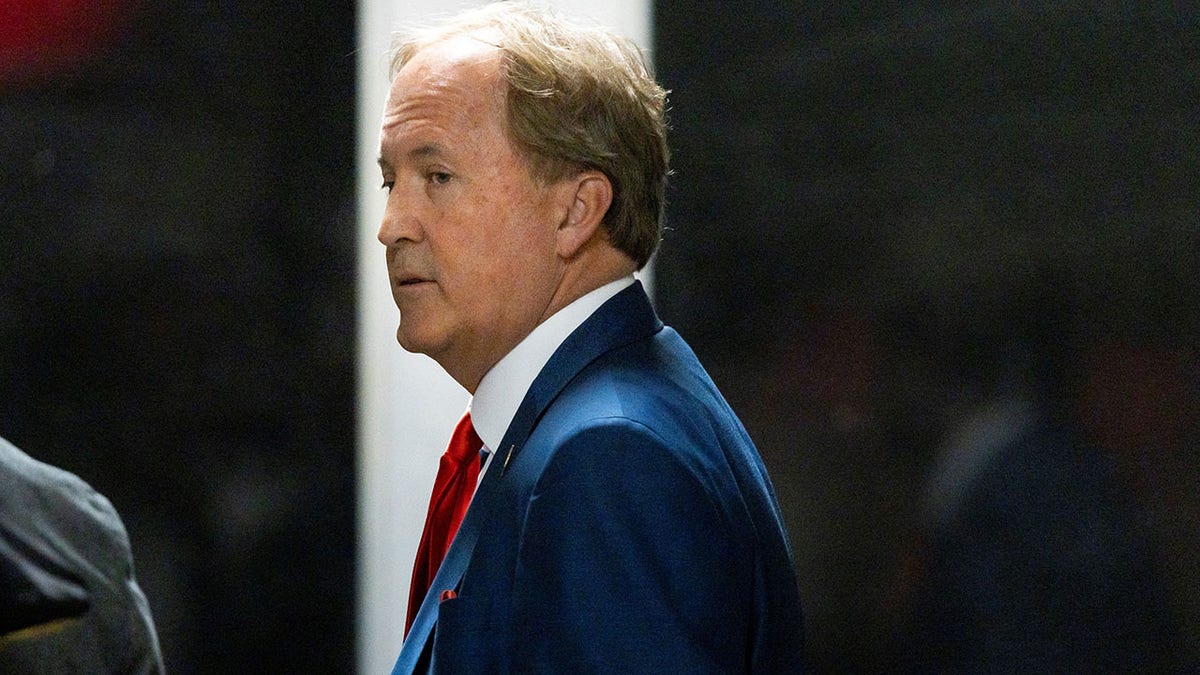
In the two lawsuits, the district attorneys said the rule is an unconstitutional overreach that violates the separation of powers and would needlessly burden offices. (Justin Lane/Reuters)
«AG Paxton should be working with all district and county attorneys in pursuit of justice, not picking fights with the Democrats in large cities,» Creuzot added.
Paxton’s office has claimed the provision is a way to «rein in rogue district attorneys» allegedly refusing to uphold the law. District attorneys that do not comply with the reporting rule could be charged with official misconduct and removed from office.
«District and County Attorneys have a duty to protect the communities they serve by upholding the law and vigorously prosecuting dangerous criminals,» Paxton said in March. «In many major counties, the people responsible for safeguarding millions of Texans have instead endangered lives by refusing to prosecute criminals and allowing violent offenders to terrorize law-abiding Texans. This rule will enable citizens to hold rogue DAs accountable.»
JASMINE CROCKETT ACCUSED OF ‘ABUSING HER POWER’ AT AIRPORT BOARDING GATE
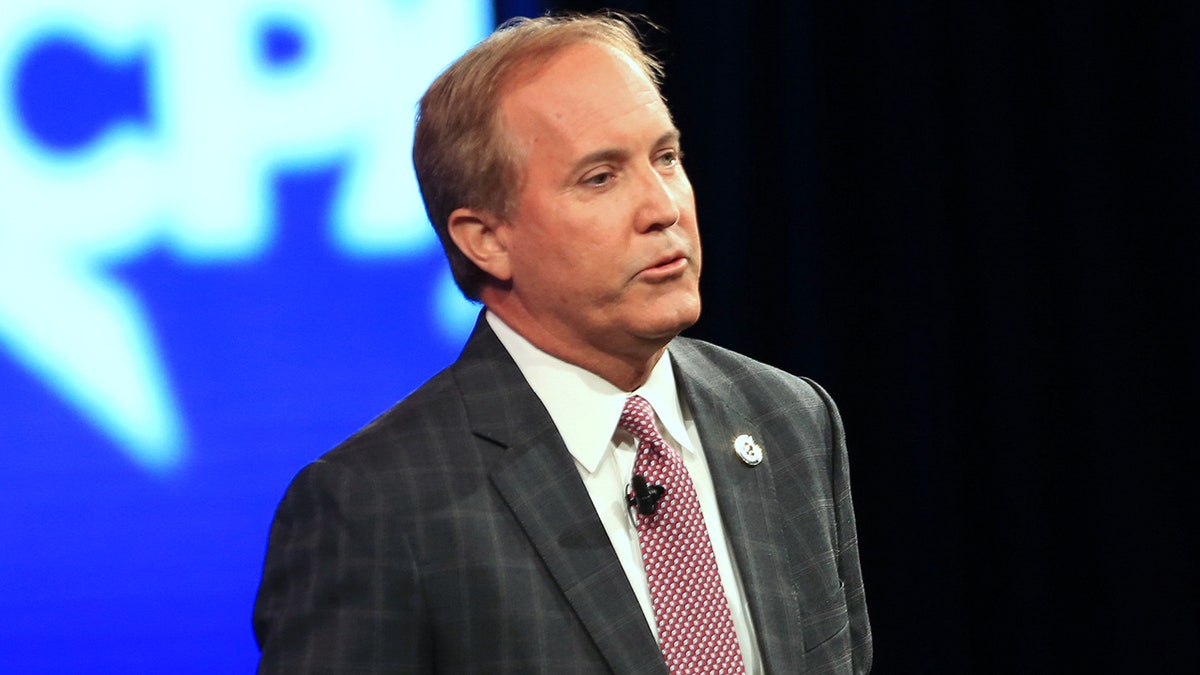
Paxton’s office has claimed the provision is a way to «rein in rogue district attorneys» refusing to uphold the law. (Dylan Hollingsworth/Bloomberg via Getty Images)
CLICK HERE TO GET THE FOX NEWS APP
In response to the lawsuits, Paxton said Friday that it «is no surprise that rogue DAs who would rather turn violent criminals loose on the streets than do their jobs are afraid of transparency and accountability.»
«My DA reporting rule is a simple, straightforward, common-sense measure that will shed light on local officials who are abdicating their responsibility to public safety. This lawsuit is meritless and merely a sad, desperate attempt to conceal information from the public they were sworn to protect,» he continued.
The two lawsuits claim Paxton’s office does not have the sweeping jurisdiction the rule creates, and that providing the information requested would be expensive and illegal, according to The Texas Tribune. The lawsuits claim the rule seeks to achieve a political objective by burdening officials and creating strict consequences for noncompliance.
Texas,US,Politics,Law
INTERNACIONAL
“Tuvimos altas y bajas”: así regresa el deporte a la UNAM entre nostalgia, miedo y cubrebocas

Después de dos años desde el inicio de la pandemia por COVID-19 en México, la Universidad Nacional Autónoma de México (UNAM) volvió a tener a su comunidad en las aulas, incluidas el deporte. Fue en septiembre de 2021 cuando se anunció el regreso paulatino a clases, pero fue hasta el semestre de enero 2022 cuando la comunidad universitaria volvió a ocupar la mayoría de los espacios físicos.
En ese lapso, el deporte representativo y de esparcimiento de la universidad tuvo que adecuarse a los cambios del semáforo epidemiológico y las restricciones de la misma UNAM para seguir con su actividad y estar lo mejor preparados para el regreso a las instalaciones.
En entrevista con Infobae México, Valentín Albarrán Ullola, director de cultura física de la Dirección General del Deporte Universitario (DGDU), contó cómo es que se planteó la reanudación de las diferentes actividades deportivas de manera presencial, tanto de competencias universitarias así como las recreativas para todos los pertenecientes a la máxima casa de estudios.
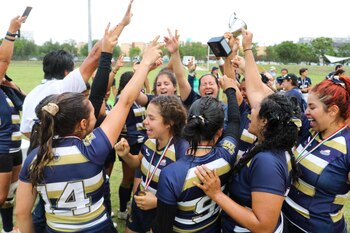
Estuvieron sujetos a las normas sanitarias que autorizaba la UNAM y la Secretaría de Salud en México. Fue en junio del 2021 cuando se permitió el regreso paulatino del 30% para los equipos representativos con la ilusión de iniciar su calendario de competencias de la CONADE y del CONDDE (Consejo Nacional del Deporte de la Educación).
Una vez que hubo una reducción significativa de contagios a nivel nacional, a principios de mayo de 2022 se permitió un aforo del 100% para realizar actividades en espacios abiertos, mientras que en duelas, gimnasios y demás instalaciones cerradas aún permanece una reducción del 60 por ciento.
La realización de pruebas, desinfección del espacio y el uso de cubrebocas fueron elementos básicos en el reinicio de las actividades.
La DGDU les proporcionó a los entrenadores y atletas un kit de higiene y demás utilería para protegerse del coronavirus, además el espacio del Estadio Olímpico brindó pruebas gratuitas para que los atletas pudieran reunirse con sus equipos con la garantía de no estar contagiados, de acuerdo con el testimonio de Oswaldo Soto, entrenador del grupo de animación y porras de Pumas UNAM.
Oswaldo Soto contó a Infobae México cómo fue su regreso a las actividades presenciales con su disciplina. Lo primero que realizaron fue una planeación detallada para volver a ocupar el campo “El Arrancadero” de Ciudad Universitaria.

“Tuvimos que meter nuestro programa de trabajo para que lo puedan autorizar bajo el lineamiento del director y si no le gustaba, nos regresaba para modificar nuestro plan de trabajo”.
Para agosto de 2021 pisaron por primera vez el campus desde el cierre de la UNAM, inició las sesiones con un grupo reducido de cinco personas, después pasó a 10 porristas y así fueron creciendo sus grupos hasta tener a todos. A mediados de octubre de 2021 llevaron a cabo un sistema híbrido, es decir actividades en línea y presenciales por cada semana.
Al inicio entrenaron con el uso cubrebocas, conforme el semáforo epidemiológico se mantuvo en verde, ya no fue imprescindible y se volvió de libre uso. La campaña de vacunación ayudó a crear un espacio de seguridad y protección entre los atletas, por lo que el recibimiento de la comunidad estudiantil fue favorable.
Cabe destacar que no todas reactivaron la presencialidad pues de las 83 disciplinas oficiales, solo regresaron las que podían entrenar al aire libre y con aforos reducidos, de acuerdo con Albarrán Ullola.
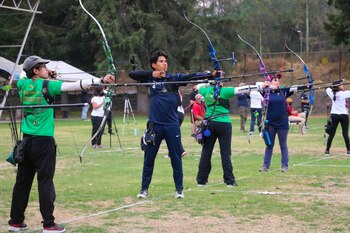
Algunas de las primeras en volver fueron: fútbol soccer, americano, basquetbol, rugby, remo, canotaje, ciclismo, béisbol, voleibol de playa, grupos de animación, entre otros.
Otros casos tuvieron que migrar a nuevos espacios que les permitiera entrenar al aire libre, tal pasó con el grupo de porras de la Prepa No. 6, ya que al no contar con el espacio adecuado, y a causa del calendario escolar, tuvieron que acudir a Ciudad Universitaria, según relataron Karla Mosqueda y Alan Valle, entrenadores de la Preparatoria Antonio Caso, a este medio.
Para febrero de 2022 empezaron mayores actividades dirigidas a la comunidad estudiantil general, principalmente en el nivel licenciatura en Ciudad Universitaria, Facultades de Estudios Superiores (FES) y algunos planteles de nivel bachillerato (Escuelas Nacionales Preparatorias y CCHs), siempre y cuando el protocolo de cada plantel lo permitiera.

Por parte de la DGDU retomaron el fomento de la cultura del deporte en los planteles, precisó Valentín Albarrán. Se retomaron las actividades recreativas y de preparación para las y los estudiantes al 100 por ciento. En el campus principal conocido como “Las Islas” volvieron las sesiones de esparcimiento para toda la comunidad.
“Tenemos el espacio deportivo Puma en Ciudad Universitaria de planta, de miércoles a viernes de 12:00 a 16:00 hrs con diferentes actividades como yoga, activación lúdica deportiva, combate medieval, baile, una serie de actividades para todos los universitarios”, explicó el director de cultura física.
Además por medio de redes sociales y por la Gaceta UNAM empezaron a invitar a los estudiantes a integrarse a las sesiones deportivas que se programaban semanalmente.
En cuanto al uso de la alberca olímpica y el gimnasio de pesas, ambos tuvieron reparaciones y cambio de mobiliario para estar en óptimas condiciones. Se espera que para el mes de julio la comunidad pueda retomar sus clases, todo con previa cita tramitada en la Red Puma en línea.

“Estamos a un 90% de volver a la normalidad”, aseveró Valentín.
En cuanto los equipos mayores de la UNAM, de facultades, prepas y los colegios de humanidades tuvieron la autorización de volver, reunieron a sus deportistas para prepararse para competencias futuras, en el caso de los representativos se trató de la Universiada Nacional, mientras que dentro de la UNAM se trató de torneos interprepas, interfacultades y demás.
Y dentro de los obstáculos que se presentaron fueron: la reagrupación de equipos, retomar la confianza entre compañeros y el factor psicológico. Tanto el director de cultura física como Oswaldo Soto coincidieron en que la pandemia orilló a que los deportistas que no viven en la Ciudad de México regresaran a sus lugares de origen, por lo que no todos pudieron incorporarse rápidamente.

Además los cambios generacionales provocaron modificaciones en los equipos representativos, así lo detalló el también entrenador del grupo de porras de la Facultad de Ciencias Políticas y Sociales:
“Como cualquier deporte tuvimos altas y bajas con la pandemia; yo tuve bajas de 175 me pasé a 80 atletas en total y cuando regresamos a presencial, pasando liga mayor, tuvimos altas en cuestión de matrícula, de 85 pasamos a casi 180-190″.
Una vez que se reencontraron, los entrenadores fueron asesorados por la DGDU para reincorporarse a sus actividades en la nueva normalidad y erradicar el miedo al contacto con el otro.
“Lo que buscó el coach fue generarnos confianza para poder regresar y volver a sentir la seguridad de estar fuera. Fue manejándolo con los ejercicios: ‘Si puedes realizar esto es porque estás sano’“, fue el testimonio de María Ofelia Huerta Reyes, porrista de Pumas UNAM y estudiante de la Facultad de Derechos.
Y es que entre el miedo a contagiarse, la nostalgia por haber perdido dos años, el encierro y la nueva normalidad fueron factores psicológicos que afrontaron los deportistas y la comunidad estudiantil en general por la falta de interacción y actividades de recreación:

“Notamos que hubo un incremento en los índices de depresión entre los estudiantes, ha habido una amplia participación de distintas entidades de la UNAM, en nuestro caso darles actividades deportivas que promuevan la socialización y eleven los niveles de serotonina y endorfina con la actividad física”, expresó Valentín Albarrán.
Mientras que en el caso de practicar un deporte y estar expuestos a un contagio, el entrenador en jefe del equipo representativo de Pumas UNAM explicó: “Ya no hay miedo pero sí son conscientes de que puede pasar”.
La parte más beneficiada del regreso fue la propia comunidad de la UNAM ya que además de hacer un hábito la actividad física, el espacio universitario se volvió parte fundamental de su desarrollo personal.
“Me llena de nostalgia, el regresar, estar aquí. Me llena de calidez el poder estar aquí, mi experiencia con este deporte ha sido como estar en una familia y el estar sin esto, para mí fue muy fuerte”, apuntó Huerta Reyes.
Aunque el deporte universitario retomó su rumbo, atletas como Ofelia consideraron que los dos años perdidos no se recuperarán en los próximos meses, sino será un proceso largo que se logrará en equipo. “Todavía nos falta para volver a tener el vínculo de confianza que habíamos generado antes de la pandemia, pero siento que vamos en un buen camino para volver a ser el Pumas UNAM de 2019″.
SEGUIR LEYENDO:
INTERNACIONAL
La abrupta y escandalosa ruptura entre Donald Trump y Elon Musk amenaza sus intereses: ¿Qué pierde cada uno?

Contratos multimillonarios de Musk, en el aire
Regulaciones federales
Posible impacto en el «gran y hermoso» proyecto
Consecuencias en la élite tecnológica
INTERNACIONAL
Trump ally stands firm against ‘big, beautiful bill’ despite pressure: ‘It’ll completely backfire’

NEWYou can now listen to Fox News articles!
EXCLUSIVE — One of the leading opponents of President Donald Trump’s «big, beautiful bill» declared not even the commander in chief will be able to deter him from speaking out against what he sees as a bill that falls short of Republicans’ goal of cutting government waste.
«It’ll completely backfire on him,» Sen. Ron Johnson, R-Wis., told Fox News Digital of any attempts by Trump to sway him on the current legislation.
Johnson has become a prominent voice of opposition against the House GOP’s offering to the budget reconciliation process. Senate Republicans finally began the tedious process of parsing through the bill this week.
‘HE’S NOT A BIG FACTOR’: TRUMP’S SENATE ALLIES DISMISS ELON MUSK’S CALLS TO ‘KILL THE BILL’
Sen. Ron Johnson says not even President Trump can sway him on the «big, beautiful bill.» (Getty Images)
Lawmakers in the upper chamber, Johnson included, are determined to make changes to the bill, with most wanting to make reductions to Medicaid and food stamps more palatable. Trump has made it clear his bill must pass but has acknowledged the Senate will need to make a few changes.
Trump’s directive has been to deliver a bill that can survive the razor-thin majorities in both chambers.
Johnson, however, wants to see spending returned to pre-pandemic levels, cuts that are trillions of dollars deeper than what House Republicans could stomach. And he is ready to vote against the bill unless he sees the changes he wants.
And he believes that a pressure campaign from the president against him and other like-minded fiscal hawks will fail.
He said a better approach would be to work with lawmakers and fiscal hawks like him to gain a better understanding of the reality of the country’s fiscal situation, a reality that «is grim,» he said.
SEN. RON JOHNSON PROPOSES ‘LINE-BY-LINE’ CUTS TO PASS TRUMP’S ‘BIG, BEAUTIFUL BILL’
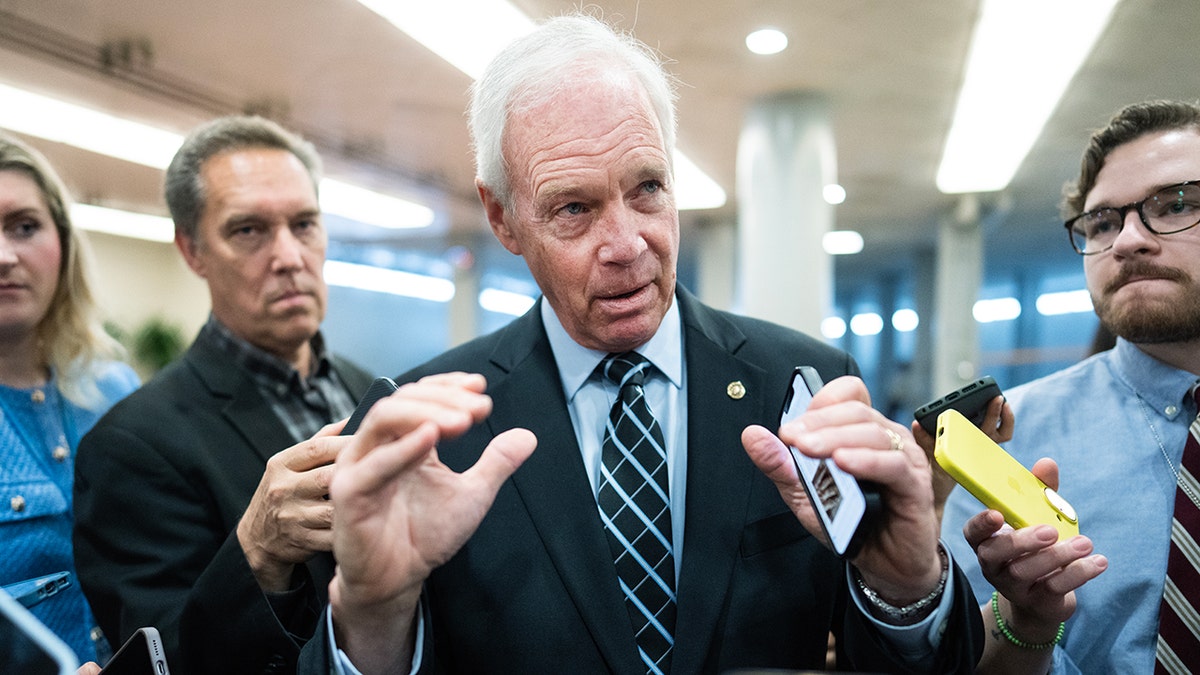
Sen. Ron Johnson, R-Wis., talks with reporters in the U.S. Capitol after the House passed the One Big Beautiful Bill Act May 22, 2025. (Tom Williams/CQ-Roll Call, Inc via Getty Images)
NATIONAL DEBT TRACKER: AMERICAN TAXPAYERS (YOU) ARE NOW ON THE HOOK FOR $36,214,501,400,213
Johnson has been up front about his disdain for the bill but has so far avoided public retribution from Trump. In fact, the two have spoken twice this week, once on Monday and later during a Senate Finance Committee meeting at the White House Tuesday.
The lawmaker has told Trump he’s in Trump’s corner and that he wants «to see you succeed,» but he has been steadfast in his position that the bill does not go far enough to tackle the national debt.
And the debt continues to climb, nearing $37 trillion and counting, according to Fox News’ National Debt Tracker.
The House’s offering set a goal of $1.5 trillion in spending cuts over the next decade, which lawmakers in the lower chamber have pitched as a positive step forward to righting the country’s fiscal ship, an offering Johnson panned as falling drastically short of the GOP’s promises to cut deep into government spending.
«What’s so disappointing about what happened in the House is it was all rhetoric. It’s all slogans,» Johnson said. «They picked a number. Literally, they picked a number out of the air.»
GOP SENATORS EXPRESS ‘CONCERNS,’ ‘SKEPTICISM’ OVER TRUMP’S SPENDING BILL AFTER MUSK RANT
Johnson views this attempt at the budget reconciliation process as a rare opportunity to «do the hard things» when it comes to spending cuts, but others in the GOP have been more hesitant to cut as deep.
Johnson said a main reason Republicans have so far fallen short of meeting the moment for the most part is that lawmakers don’t understand just how much the federal government shovels out the door year in and year out.
The lawmaker recalled a moment roughly three years ago during a debate over another year-end omnibus spending bill, when each of the dozen appropriations bills is crammed into one, bloated package that is universally reviled and almost always passes.
He asked his colleagues if they really knew just how much the government spends, and no one «volunteered to answer.»
«Nobody knew. I mean, think of that. The largest financier in the world. We’re supposedly, in theory, the 535 members of the board of directors, and nobody knew,» he said. «Why would they? We never talked about it.»
CLICK HERE TO GET THE FOX NEWS APP
Johnson has been busy trying to better educate his colleagues, putting together his own charts and graphs that cut out the «noise,» like the latest nonpartisan Congressional Budget Office report that found the legislation would add $2.4 trillion to the national debt over a decade. The GOP has universally panned that projection.
«We can’t accept this as a new normal,» Johnson said. «We can’t accept — you can take pot shots of CBO, but you can’t deny that reality. [It] might be off a little bit, but that is the trajectory, and that’s undeniable.»
-

 POLITICA1 día ago
POLITICA1 día agoCristina Kirchner advirtió que la pueden “meter presa” y lo relacionó con su candidatura a diputada provincial
-

 ECONOMIA2 días ago
ECONOMIA2 días agoUn proyecto de u$s100.000 millones: claves del acuerdo entre Milei y Meloni para exportar gas de Vaca Muerta
-

 POLITICA2 días ago
POLITICA2 días agoTras la muerte de Thiago, Patricia Bullrich redobló su defensa del policía y pidió perpetua para los tres ladrones






























